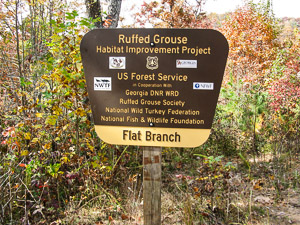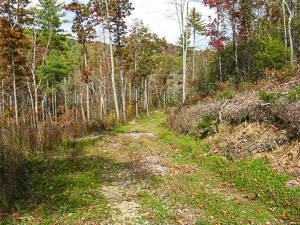The Flat Branch Ruffed Grouse Habitat Improvement Area has been a work in progress for many years. It includes a variety of management techniques focused on improving high elevation early successional habitat. Here are some of the specific management practices that have been part of this project.
- Rotational controlled burning – helps create open habitat in which sun-loving plants can thrive and produce food and cover for the grouse.
- Selective tree removal – this contributes to the same habitat characteristics as the use of fire in a more strategic and methodical manner because it allows the picking and choosing of specific trees for removal that allows more sunlight to reach the ground.
- Wildlife opening planting – produces more and better food for grouse
- Soft-mast shrub plantings – another food enhancing technique that produces berries such as Hawthorne and Service Berries.
- Non-native invasive species control – Invasive plant species, left unchecked, out compete more desirable vegetation that provides better habitat.
- Road closure – minimize disturbance of the habitat by motorized vehicles as well the birds, especially during nesting season. The old road was planted with food producing plants.
This work benefits other wildlife such as white tailed deer and wild turkey. Of special interest are the benefits to the Golden-winged Warbler, a rare bird in Georgia whose breeding range extends into this part of the state.
The project has spanned the tenure of several district rangers, wildlife biologists, wildlife technicians and foresters. The resulting improvements in the ruffed grouse population has been gradually taking place over many years and is the result of the efforts of many dedicated people including our partners.
- Georgia Department of Natural Resources Wildlife Division
- Ruffed Grouse Society
- National Wild Turkey Federation
- National Fish & Wildlife Foundation
- Many volunteers
For more information about the value of young forest habitats, visit www.youngforest.org.





